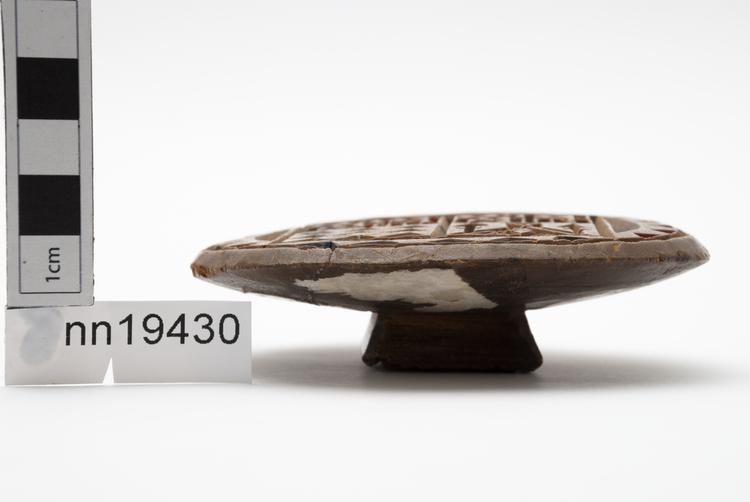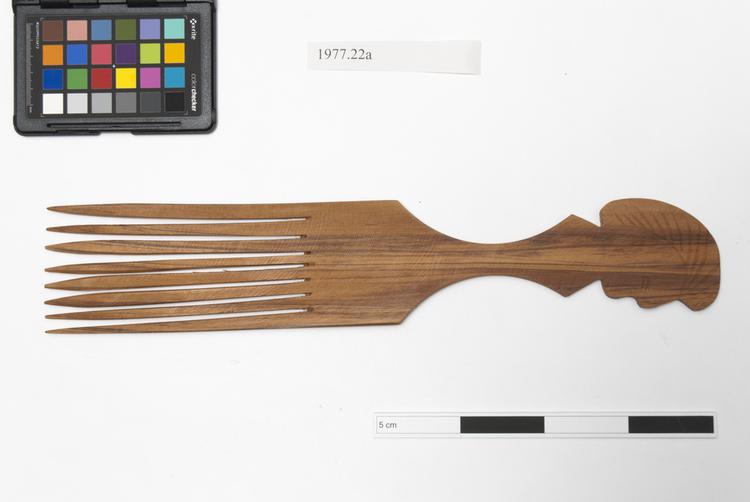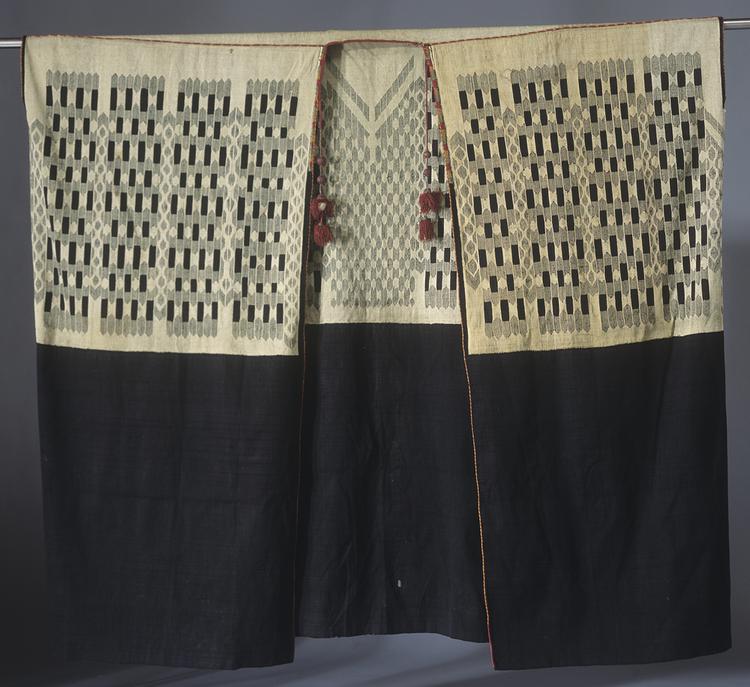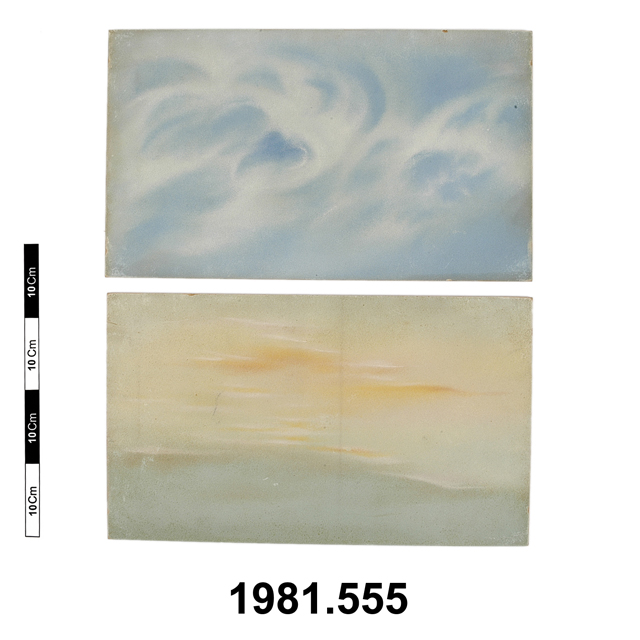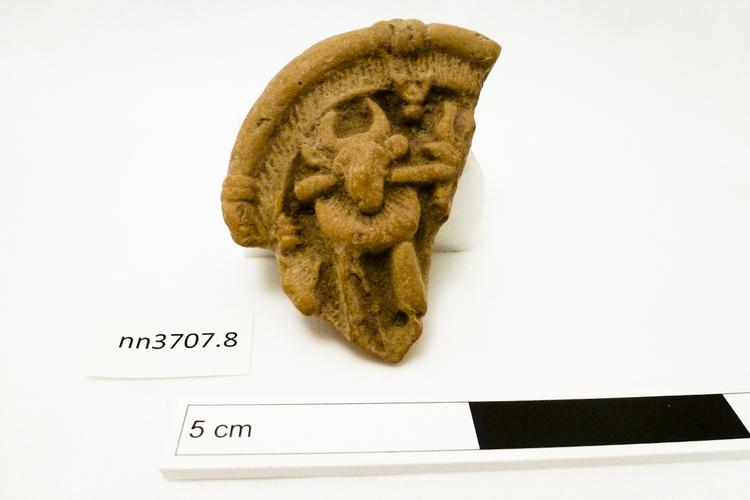
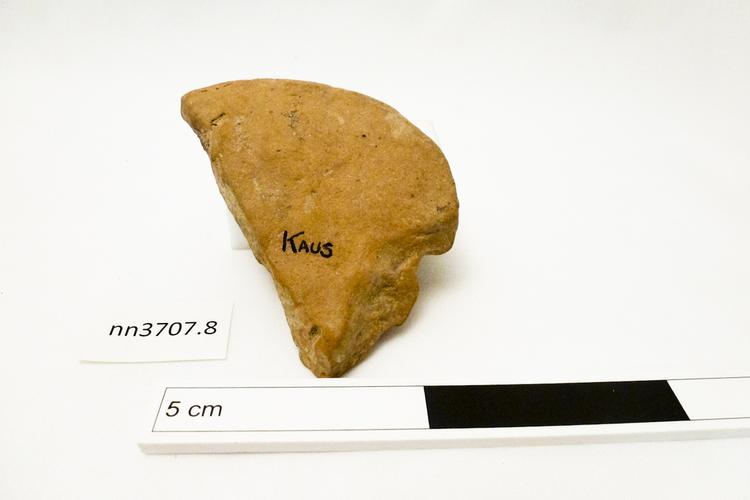
Broken clay plaque depiciting a bull with a yoke or similar around its neck.
A fragment (roughly half) of a plaque with a flat back, in coarse red terracotta, depicting a frontal view of a vehicle drawn probably by a pair of yoked bovines, each with a thick ruff-like collar. The scene is bordered by a thick half-round band with knots at the top (and bottom presumably), and sides. At the top of the plaque and descending from the incised fringe surrounding the scene is a tri-ratna, symbol of the Buddhist ‘Three Jewels’: the Buddha, the Dharma (Law) and the Sangha (the Community). To the right of the preserved bullock is a now unidentifiable object, just possibly, with the eye of faith, another tri-ratna. The bullock cart is sometimes in Buddhist iconography associated with bodhisattvas. The presence on it of tri-ratnas suggests this piece is definitely a Buddhist votive object, though its role in the Buddhist worship process is not known, beyond its use as a reminder or as an offering. Marked on the back in black ink with ‘Kaus’ (Kauśāmbī, Kaushambi District, Uttar Pradesh, India) and in pencil with the number ‘36’. Kauśāmbī, may date to as early as the early 1st millennium BCE and was finished by about the 6th century CE. This piece may date to circa the 1st-3rd centuries CE. Archaeological context: presumably unstratified and from a surface collection. Given by Col D H Gordon (1952/3).



